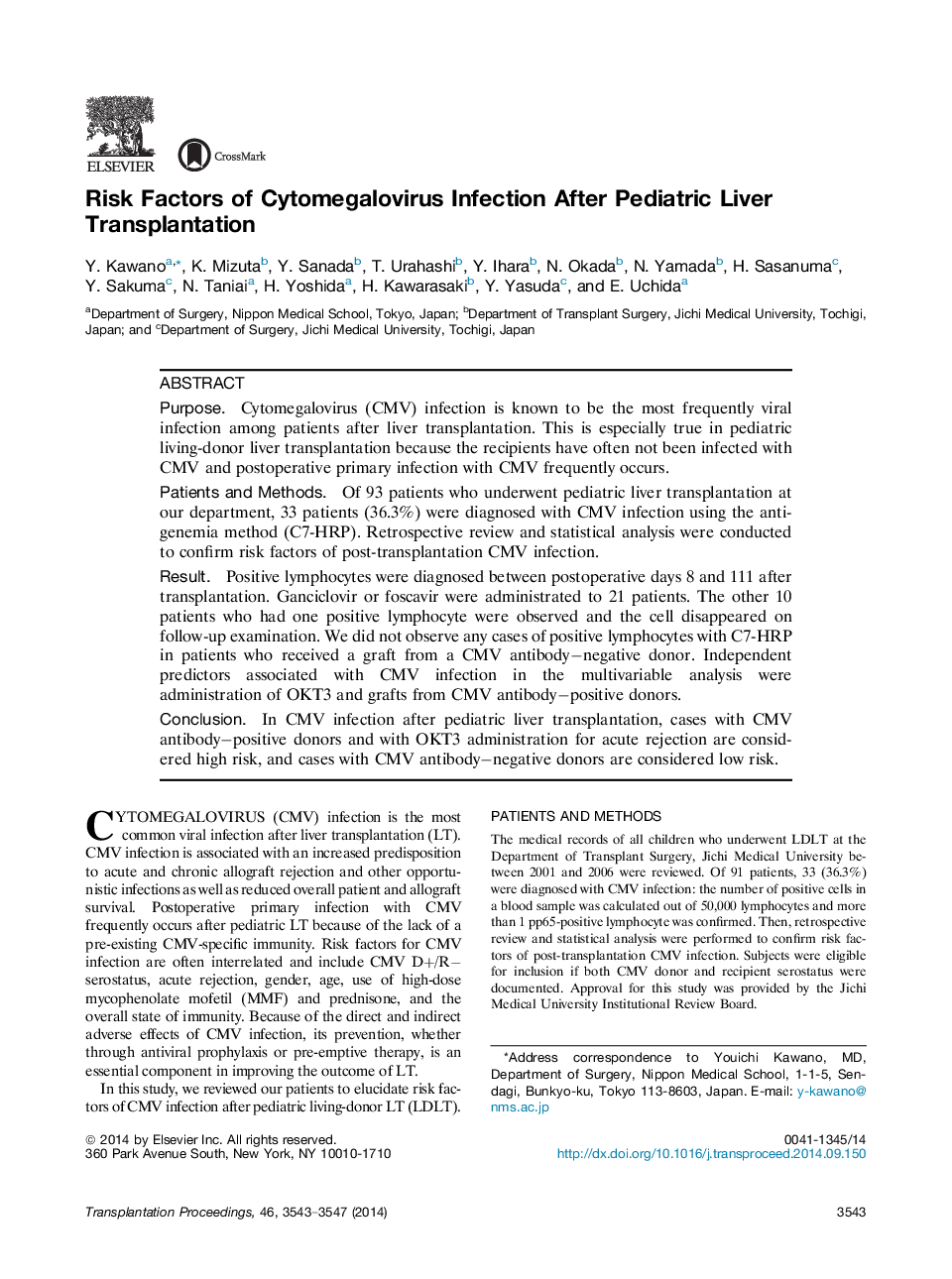| Article ID | Journal | Published Year | Pages | File Type |
|---|---|---|---|---|
| 6247704 | Transplantation Proceedings | 2014 | 5 Pages |
â¢Patients were reviewed to elucidate risk factors of cytomegalovirus (CMV) infection after pediatric living donor liver transplantation (LDLT), for which data has been rare.â¢We discovered important information regarding CMV infection in patients with CMV antibodyâpositive donors for whom OKT3 administration is considered high risk and patients with CMV antibodyânegative donors who are considered low risk.â¢Our experience could be helpful for post-LDLT follow-up examinations, especially for recipients who suffered from CMV infection after pediatric LDLT.
PurposeCytomegalovirus (CMV) infection is known to be the most frequently viral infection among patients after liver transplantation. This is especially true in pediatric living-donor liver transplantation because the recipients have often not been infected with CMV and postoperative primary infection with CMV frequently occurs.Patients and MethodsOf 93 patients who underwent pediatric liver transplantation at our department, 33 patients (36.3%) were diagnosed with CMV infection using the antigenemia method (C7-HRP). Retrospective review and statistical analysis were conducted to confirm risk factors of post-transplantation CMV infection.ResultPositive lymphocytes were diagnosed between postoperative days 8 and 111 after transplantation. Ganciclovir or foscavir were administrated to 21 patients. The other 10 patients who had one positive lymphocyte were observed and the cell disappeared on follow-up examination. We did not observe any cases of positive lymphocytes with C7-HRP in patients who received a graft from a CMV antibodyânegative donor. Independent predictors associated with CMV infection in the multivariable analysis were administration of OKT3 and grafts from CMV antibodyâpositive donors.ConclusionIn CMV infection after pediatric liver transplantation, cases with CMV antibodyâpositive donors and with OKT3 administration for acute rejection are considered high risk, and cases with CMV antibodyânegative donors are considered low risk.
